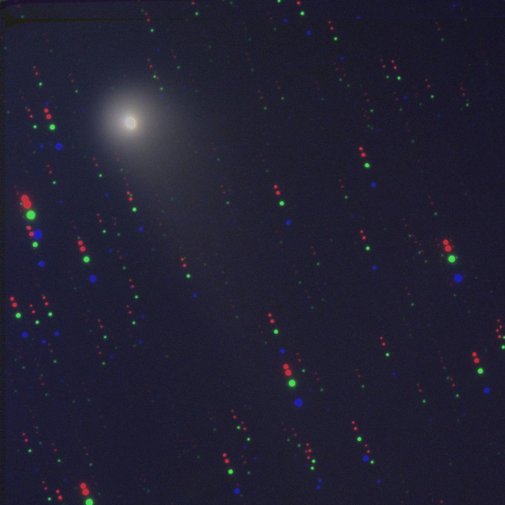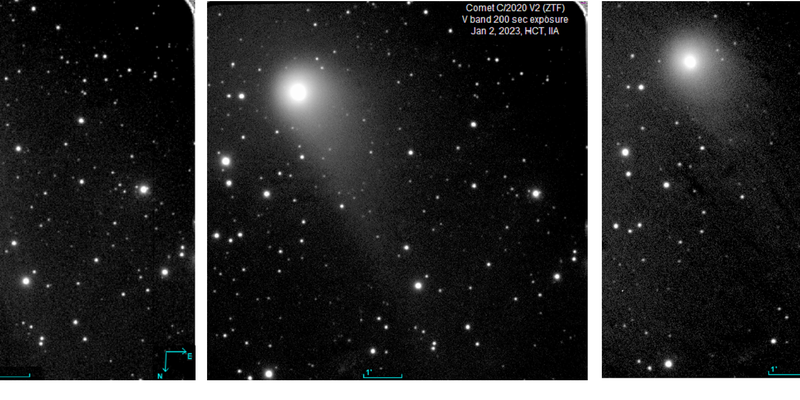Comet C/2020 V2 (ZTF)
Another comet visible in the northern skies this year was also discovered by the Zwicky Transient Facility (ZTF): Comet/2020 V2 (ZTF). It will pass the perihelion on 8th May at a distance of 2.23 AU, and its closest approach to Earth will be on September 17 at ~1.85 AU. But it is already quite bright with magnitude of about 12 (see further), though it won't brighten to a naked-eye visibility, but it will be visible for most of the year with the help of a binocular with a 80-mm aperture, or a small telescope.
It seems that this comet is not a periodic comet as the eccentricity of its orbit is estimated to be greater than 1: e=1.0012. With negative semi-major axis of about -2000 AU, it is a hyperbolic orbit comet, which means that it will pass through the Solar System only once. But it is still the Solar System comet, likely originating from the Oort cloud, as interstellar comets have eccentricities much greater than one, for ex., eccentricity of comet Borisov was 3.314.
We observed Comet/2020 V2 on Jan 2 with the HCT (IIA, Hanle) in 3 filters: B (2x240sec), V (2x200sec), and R (300 sec total of 6 exposures). We also created the RGB image – the `true’ colour image by co-adding the images in B, V and R bands. Comet C/2022 E3 has a wide coma and a short tadpole-shaped dust tail. We do not see the ion tail here. We also estimated its brightness as 12.7 in B, 12.3 in V, and 11.8 in R.
The Observers: Margarita Safonova and Mulchand Kurre (IIA). Image manipulation: Margarita Safonova and Bharat Chandra (IIA). Brightness calculation: Igor Lukyanyk, Olexandra Ivanova (Astronomical Institute, Slovak Academy of Sciences).

